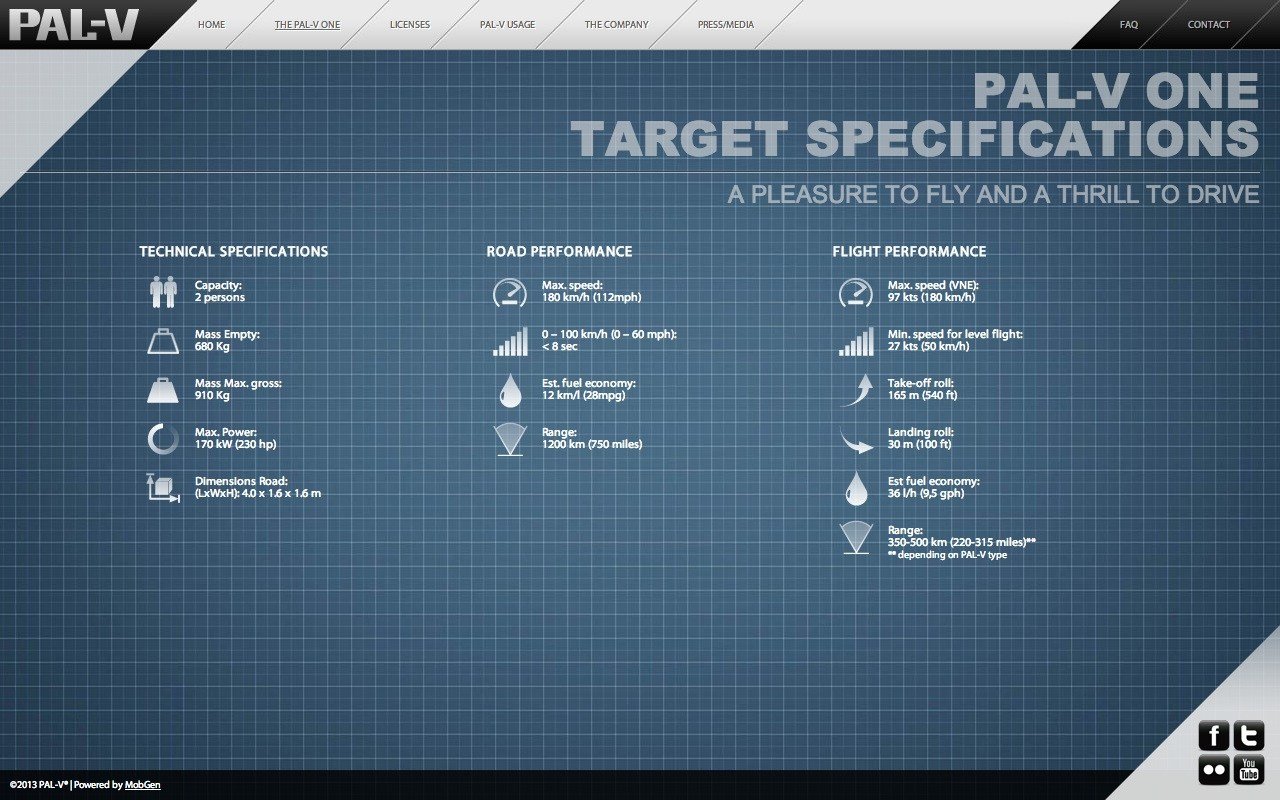Is that a plane?
Doesn’t quite look like one.
Is that a bird?
Definitely not.
Is that an helicopter?
Doesn’t fully look like one. Kinda, though.
Is that an UFO?
Ummmm… I don’t think so.
Wait… IS THAT A FLYING CAR?
You betcha.
Is it a car? A helicopter? A plane? Actually, the Pal-V One, a flying car, combines components of all three.
That’s right, folks. It’s not just a science fiction or a Harry Potter thing anymore. Flying cars have actually been invented. A company called Pal-V has officially invented a flying car that has the ability to both drive on the roads and fly in the air. Not only has it been invented, the Pal-V isn’t the only flying car prototype companies are trying to push out to the market. Popular Mechanics has dubbed the Pal-V as “the Dutch-built and recently tested PAL-V One might be a much more realistic approach to the dream of the flying car” than the other competitors in the market are. The Pal-V design is being aimed initially at emergency services, according to Pal-V CEO Robert Dingemanse.
According to the Pal-V website, The PAL-V ONE is:
A two-seat hybrid car and gyroplane. In layman’s terms, a “personal air and land vehicle”. Fully integrated door-to-door transportation. Aerodynamic with three wheels. A 230hp, four-cylinder engine powered by petrol. Able to go from 0 to 60 in under 8 seconds when driven on the road. A vehicle with a single rotor and propellor that enables flight-ready situations Is a motorcycle and gyrocopter. Available in red or black. Made from carbon fiber, titanium, and aluminum and weighs 1,499 pounds. Capable of flying below 4,000 feet (1,200 m) which, according to the Pal-V website, is the airspace available for uncontrolled Visual Flight Rules traffic. Powered by a flight certified aircraft engine. Designed to cruise at low altitudes, below 4,000ft. Although it needs a 540 foot runway for take-off, it only needs 100 feet to land. Capable of reaching speeds up to 112 mph (180 km/h) both on land and in the air. Quieter than helicopters due to the slower rotation of the main rotor. Capable of accelerating like a sports car on the road. Based on using the patented DVC tilting technologies invented for the Carver ONE (a two-passenger land vehicle).
According to the Pal-V website, converting the PAL-V ONE from airplane to automobile is a very easy process which takes about 10 minutes. It costs around $295,000 and you’ll need to have a Sports Pilot Certificate to fly one, as well as a driving license.
Here is a screenshot I took of the specifications off of the Pal-V website:
On the ground, the machine handles somewhere between a motorbike and a racing car – its chassis is built to lean into turns, and the two-seater can reach speeds of up to 112mph. The Pal-V One’s 27 gallon tank means pilots can fly for up to 220 miles at low altitudes – around 4,000ft – or drive for up 750 miles. Basically, if you want to avoid that lengthy traffic jam, no problem… just fly instead! I love the idea of flying over large bodies of water. This also would make road trips much shorter due to being able to “cut traffic jams” and “roads that are a little out of the way”. I’m still trying to wrap my mind around the concept of a flying car. I keep thinking to myself, “Oh, greaaaat, now we have to worry about bad drivers in the air, too.” But I even have to admit that it’s a pretty cool concept if they can get around all of the red tape.
My advice… If this becomes a thing, don’t crash into a tree like Harry Potter and Ron Weasley did.


